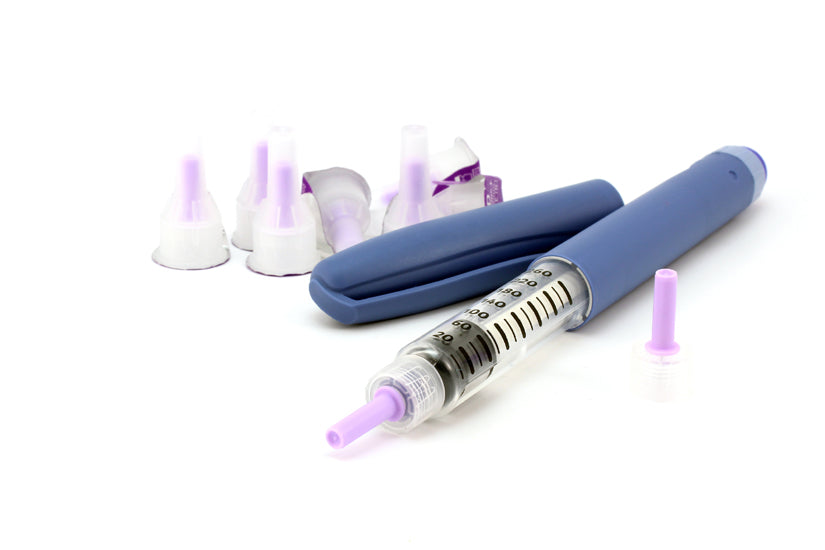Many diabetic patients believe that the decline in islet function is an incurable curse. In fact, many domestic and international literature and data show that the rate of decline in islet function can be delayed or even reversed.
A scientific lifestyle can slow down the rate of decline in islet function. In 1986, Professor Pan Xiaoren from China-Japan Friendship Hospital, in collaboration with more than 50 medical teams in Daqing, Heilongjiang Province, conducted a study on preventing diabetes using three strategies: diet, exercise, and diet plus exercise. The results found that these three methods could significantly reduce the incidence of diabetes. This indirectly verified that a scientific lifestyle can improve insulin resistance and slow down the rate of decline in islet function.
Today, the Daqing Diabetes Prevention Study has been going on for over 30 years. Professor Pan Xiaoren has passed away, but Professor Li Guangwei is still conducting ongoing observations on the patients from those years. It has been found that the incidence of diabetes and its complications among those who strictly managed their lifestyles at that time is still lower than that of the unmanaged population.
In 2014, the UK completed a two-year randomized controlled trial involving 306 participants with diabetes without complications, divided into an intensive group and a control group. The former strictly controlled their diet, with daily intake being 1/2 to 1/3 of normal, and walked 15,000 steps per day; the control group followed a conventional diet and exercise routine. The trial results showed that the intensive group lost weight and their islet function recovered; the control group's islet function declined, and their weight increased.
Professor Weng Jianping from the First Affiliated Hospital of University of Science and Technology of China proposed that early insulin pump intensive treatment for type 2 diabetes can allow islet B cells to recover to a certain extent, and even alleviate diabetes.
In addition to strict clinical trials at home and abroad, endocrinologists have almost all encountered cases in their clinical work where diabetic patients or diabetic obese patients they treated were able to control blood sugar levels without medication for months or years after strictly controlling blood sugar, adhering to a reasonable diet and exercise.
Professor Accili from Columbia University in the United States proposed the theory of islet B cell dedifferentiation, suggesting that islet B cells in patients with type 2 diabetes have not truly apoptosed in the early stages of the disease, but are in a temporary dormant state under the influence of factors such as overeating, inactivity, obesity, stress, and hyperglycemia. After adjusting these factors, some islet B cells can recover their ability to secrete insulin. This theory has attracted the attention of scientists.
How to effectively protect islet function
Choose drugs that can protect islet function. Currently recognized drugs that can protect islet function include insulin, GLP-1 receptor agonists, SGLT-2 inhibitors, metformin, α-glucosidase inhibitors, and thiazolidinediones, etc.
Reasonable selection of food or nutritional conditioning. The primary condition for the control of diabetes by nutritional medicine is to regulate the metabolic balance of energy, followed by protecting and restoring islet B cell function and meeting special physiological needs. The expert consensus clearly states that special nutritional supplements that have been verified can be used for nutritional conditioning, controlling blood sugar, reducing the burden on islet B cells, and protecting islet function. Staple foods should be a mix of coarse and fine grains, and a rich diet of coarse grains and vegetables is easier to protect islet function.
Moderate exercise. Exercise allows more blood sugar to enter cells for use, lowering blood sugar levels, reducing insulin resistance, improving the toxic reaction of hyperglycemia to B cells, and indirectly protecting islet function.
Recently, two diabetic patients came to the endocrine outpatient clinic, Mr. Zhang and Ms. Liu. Mr. Zhang is 31 years old with a body mass index (BMI) of 26 kg/m², and Ms. Liu is 48 years old with a BMI of 24 kg/m². Both are newly diagnosed diabetics, but their treatment plans are different.
Case 1: Insulin intensive treatment achieved clinical remission of diabetes
Mr. Zhang had dry mouth and frequent urination for three months, and his fasting finger blood glucose measured at the clinic was 13.0 mmol/L. He came to the hospital for diagnosis and treatment, and further tests showed a fasting blood glucose of 15.8 mmol/L, hemoglobin A1c of 12.4%, blood lipids: cholesterol 5.4 mmol/L, triglycerides 2.6 mmol/L, low-density lipoprotein cholesterol 3.6 mmol/L, high-density lipoprotein cholesterol 0.9 mmol/L. Urine routine examination showed ++++ glycosuria, fasting C-peptide 0.27 mmol/L. Liver and kidney function were not significantly abnormal.
From the test results, it can be seen that Mr. Zhang's blood sugar was significantly elevated, and he had lipid disorders and was obese.
Based on Mr. Zhang's situation at that time, our treatment plan was to temporarily give insulin intensive treatment.
Hearing that he needed to take insulin, Mr. Zhang expressed strong refusal, saying that he was only in his thirties, felt not so bad, and his condition was not serious enough to require insulin. Moreover, if he started using insulin now, he would have to use it for life, as several diabetic patients around him had done.
To make Mr. Zhang understand the current treatment plan, the doctor made a metaphor for him: comparing his islet B cells to a horse that, due to working hard for many years on poor roads (high glucose toxicity and high lipid toxicity), was already in a state of slackness and exhaustion. To make the horse work better, the most effective method is not just to feed it enough, or to replace the horseshoes (using various oral hypoglycemic drugs), etc., it needs more rest, reduced workload, and appropriate rest.
At this time, the best method is to rent another horse (external insulin) to share part of its work and do road recovery work (lowering blood sugar, regulating blood lipids, losing weight). After resting for a while, if all goes well, it can return to a relatively normal working state (controlling blood sugar through diet and exercise alone), and if it is not so good, it only needs one or two types of oral hypoglycemic drugs to control blood sugar. Now, if you forcefully use multiple oral hypoglycemic drugs, it is like whipping the horse to run fast, causing irreversible damage.
Hearing this metaphor, Mr. Zhang readily accepted the short-term insulin intensive treatment plan. A month later, when he returned for a follow-up visit, Mr. Zhang's insulin dosage had significantly decreased compared to the start, and because he strengthened exercise and reduced food intake, his weight had also dropped significantly. Therefore, insulin was discontinued and changed to metformin for blood sugar control. Two months later, because the blood sugar measured was not high, metformin was stopped, and self-measured blood sugar was still not high (fasting blood sugar <6.1 mmol/L, postprandial 2-hour blood sugar <7.8 mmol/L). Three months later, the hemoglobin A1c was rechecked and was 6.1%, reaching a state of clinical remission of diabetes.
Case 2: Oral metformin instead of insulin injection
Ms. Liu was found to have a fasting blood sugar of 7.8 mmol/L during a unit physical examination and came to the hospital for consultation. Further tests showed a fasting blood sugar of 8.2 mmol/L, postprandial 2-hour blood sugar of 10.0 mmol/L, and hemoglobin A1c of 7.5%. Urine routine examination showed ++ glycosuria, fasting C-peptide 0.4 mmol/L. Liver and kidney function were not significantly abnormal. There were no special diseases in the past.
Based on Ms. Liu's situation, the treatment plan given was to take metformin 0.5 grams orally twice a day. After hearing this plan, Ms. Liu refused and requested insulin treatment because she heard from people around her that metformin would harm the kidneys, while insulin had no effect on the liver and kidneys and was very safe.
Hearing Ms. Liu's request, the doctor patiently explained to her: her blood sugar was not very high, and her islet function was good. The horse in her body was slightly tired, and as long as it was fed (using hypoglycemic drugs), it could be in a normal working state, without the need for insulin treatment. Although insulin has no adverse reactions on the liver and kidneys, because its hypoglycemic effect is very strong, it can easily lead to hypoglycemia, which is more harmful to diabetic patients than hyperglycemia. In addition, insulin promotes fat synthesis and increases weight, so it is not recommended for Ms. Liu to use insulin treatment.
Metformin is currently recognized worldwide as a first-line medication for type 2 diabetes and does not harm the kidneys. The reason why many people think metformin harms the kidneys is mostly due to diabetic nephropathy caused by poor blood sugar control, and the cause cannot be attributed to the use of metformin.
The best medication is the one that suits you
Diabetic patients are in different states and need different treatment plans. Personalized treatment plans should be formulated according to different situations. Like the two patients mentioned above, although Mr. Zhang is young, his blood sugar is too high and he cannot use hypoglycemic drugs temporarily, so he needs short-term insulin intensive treatment, and the outcome is very good. In the end, he can control blood sugar through diet and exercise alone, reaching a state of clinical remission of diabetes.
Ms. Liu, because her blood sugar is not high, can control blood sugar through a single oral hypoglycemic drug. If she can strengthen exercise and lose weight, she can also reach a state of clinical remission. What suits oneself is the best. Please do not follow others blindly, nor go to the pharmacy to buy drugs recommended by others. If you have blood sugar elevation problems, please seek guidance from an endocrinologist as soon as possible. The earlier the treatment, the better the effect.

